
|
Astronomy Picture Of the Day (APOD)
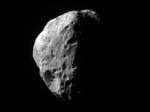 Epimetheus: A Small Moon of Saturn
Epimetheus: A Small Moon of Saturn
24.08.2005
How did Epimetheus form? No one is yet sure. To help answer that question, this small moon has recently been imaged again in great detail by the robot spacecraft Cassini now orbiting Saturn. Epimetheus sometimes orbits Saturn in front of Janus, another small satellite, but sometimes behind.
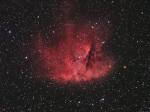 NGC 281: The Pacman Nebula
NGC 281: The Pacman Nebula
23.08.2005
NGC 281 is a busy workshop of star formation. Prominent features include a small open cluster of stars, a diffuse red-glowing emission nebula, large lanes of obscuring gas and dust, and dense knots of dust and gas in which stars may still be forming.
22.08.2005
Sometimes on Mars, there is nothing to see but red sand. Traveling two kilometers south of Endurance Crater, the robotic rover Opportunity now exploring Mars stopped and took a 360 degree panorama of a desolate and rusted Martian landscape.
 A Lenticular Cloud Over Hawaii
A Lenticular Cloud Over Hawaii
21.08.2005
Can a cloud do that? Actually, pictured above are several clouds all stacked up into one striking lenticular cloud. Normally, air moves much more horizontally than it does vertically. Sometimes, however, such as when wind comes off of a mountain or a hill, relatively strong vertical oscillations take place as the air stabilizes.
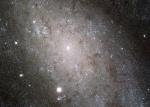 The Stars of NGC 300
The Stars of NGC 300
20.08.2005
Like grains of sand on a cosmic beach, individual stars of large spiral galaxy NGC 300 are resolved in this sharp image from the Hubble Space Telescope's Advanced Camera for Surveys (ACS). The inner region of the galaxy is pictured, spanning about 7,500 light-years.
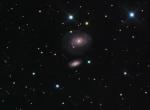 NGC 1 and NGC 2
NGC 1 and NGC 2
19.08.2005
Beautiful nebulae, clusters, and galaxies that grace planet Earth's night sky are often known by their New General Catalog designation or NGC number. That classic listing was compiled by John Louis Emil Dreyer, remarkable director of the Armagh Observatory from 1882 to 1916.
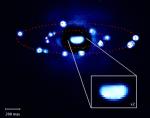 Sylvia, Romulus and Remus
Sylvia, Romulus and Remus
18.08.2005
Discovered in 1866, main belt asteroid 87 Sylvia lies 3.5 AU from the Sun, between the orbits of Mars and Jupiter. Also shown in recent years to be one in a growing list...
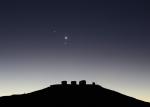 Planets over Paranal
Planets over Paranal
17.08.2005
Very bright planets and very large telescopes are part of this sunset view of Paranal Observatory. The observatory's four, massive 8.2 meter telescope units are situated on top of the 2,600 meter high mountain, Cerro Paranal, in the dry Atacama Desert in northern Chile.
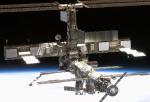 The International Space Station from Orbit
The International Space Station from Orbit
16.08.2005
The International Space Station (ISS) is the largest human-made object ever to orbit the Earth. Late last month and earlier this month, the station was visited and resupplied by space shuttle Discovery. The ISS is currently operated by the Expedition 11 crew, consisting a Russian and an American astronaut.
 Perseid Meteors and the Milky Way
Perseid Meteors and the Milky Way
15.08.2005
Where will the next Perseid meteor appear? Sky enthusiasts who trekked outside for the Perseid meteor shower that peaked over the past few days typically had this question on their mind. The above movie, where the time-line has been digitally altered, captures part of that very mystery.
|
January February March April May June July August September October November December |
|||||||||||||||||||||||||||||||||||||||||||||||||